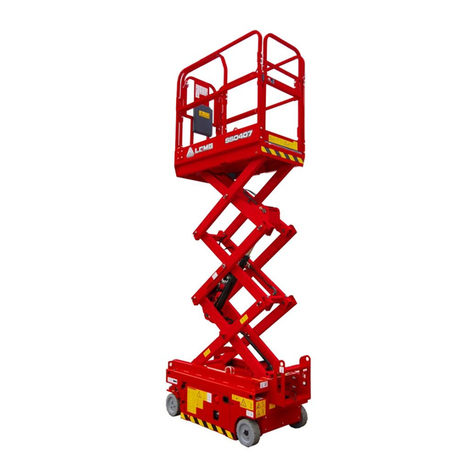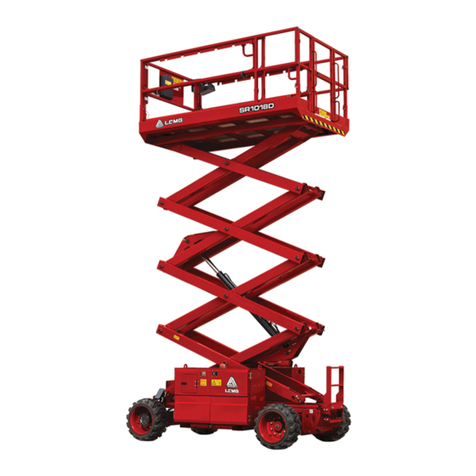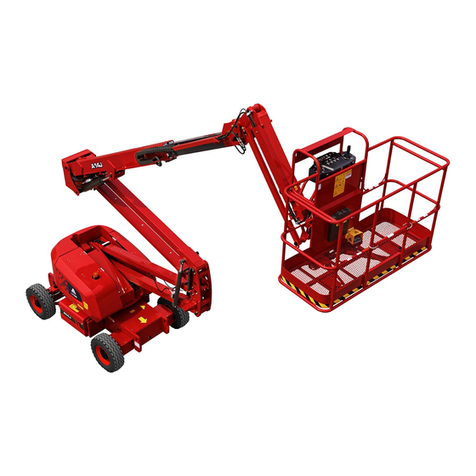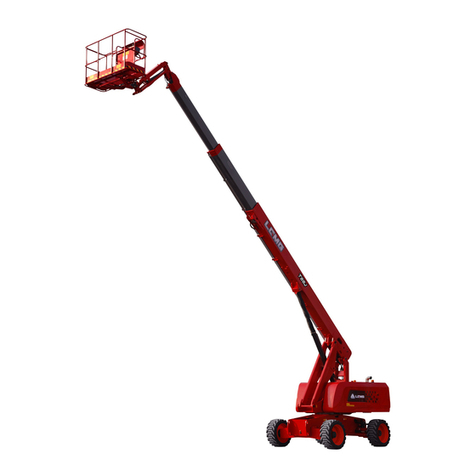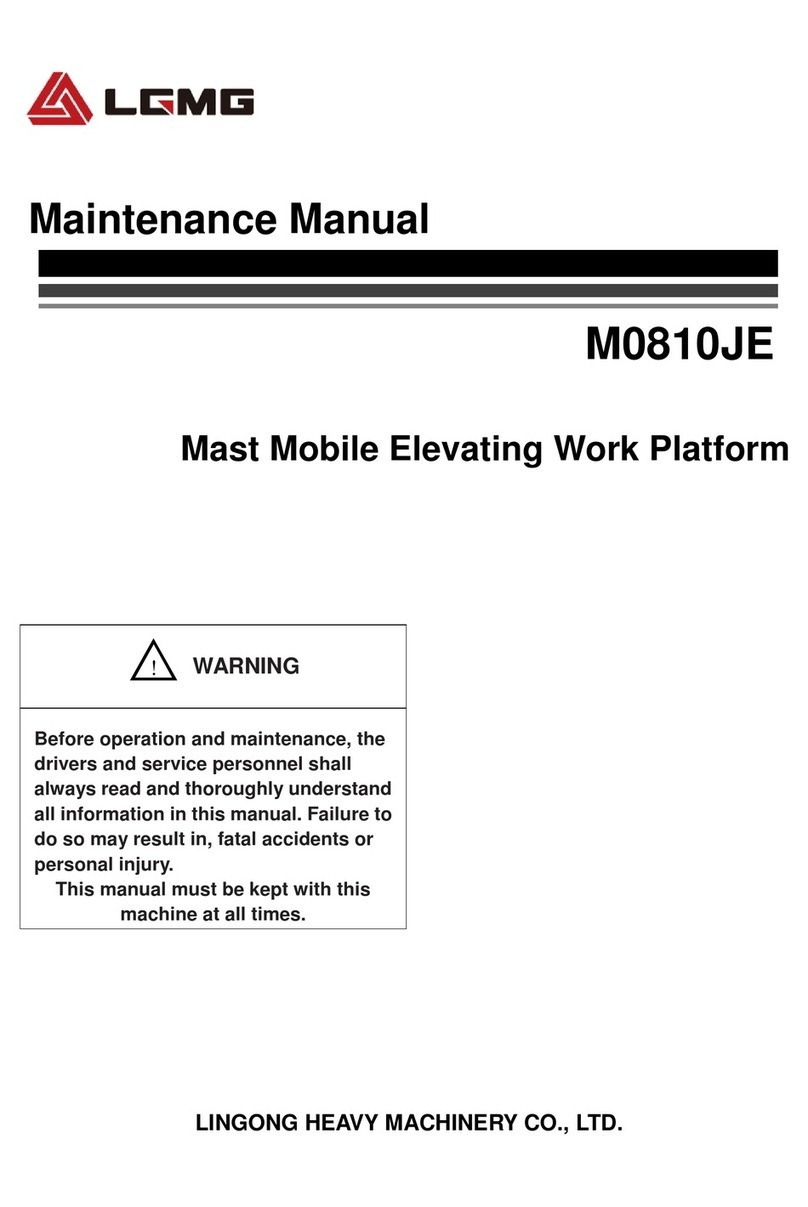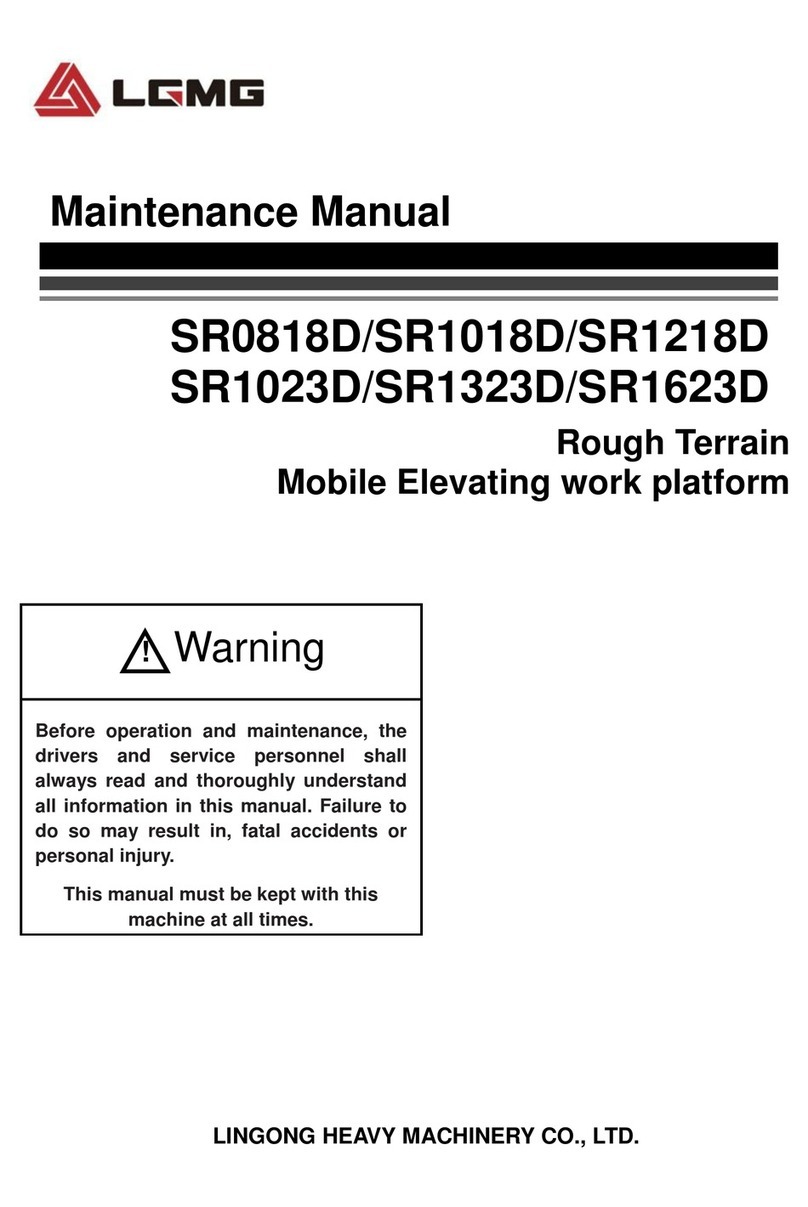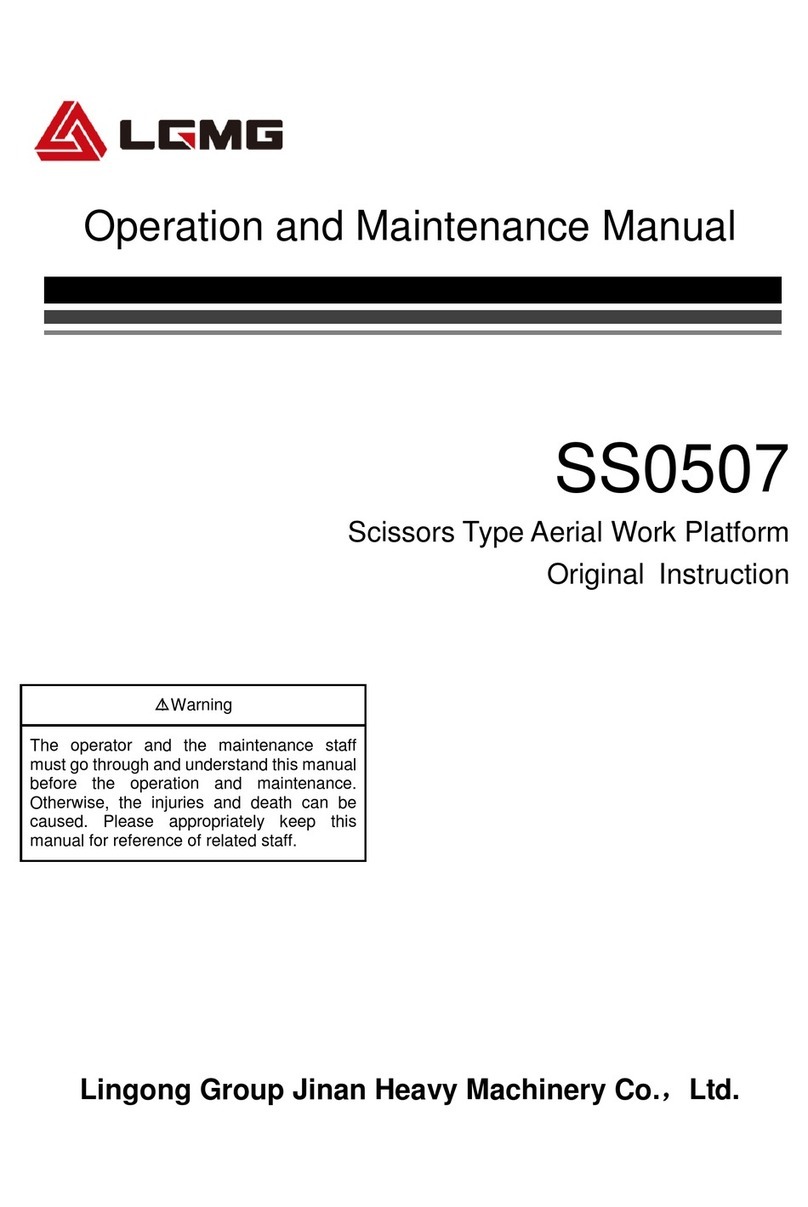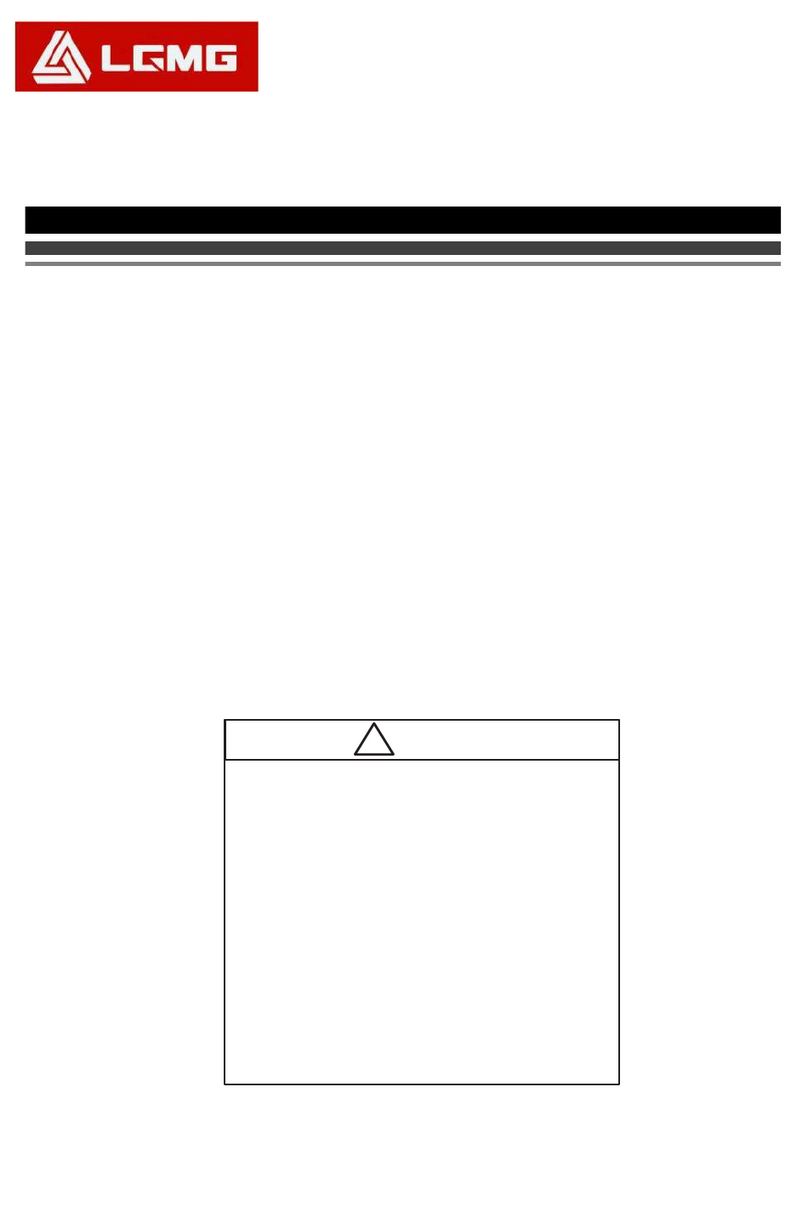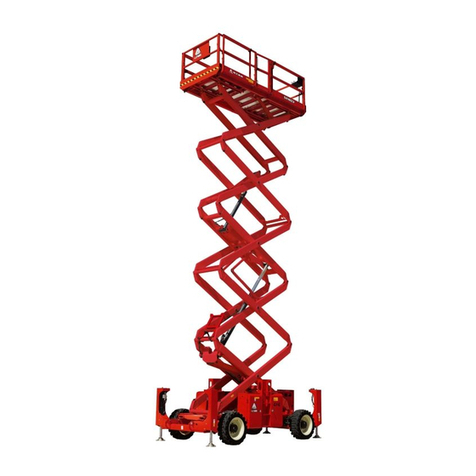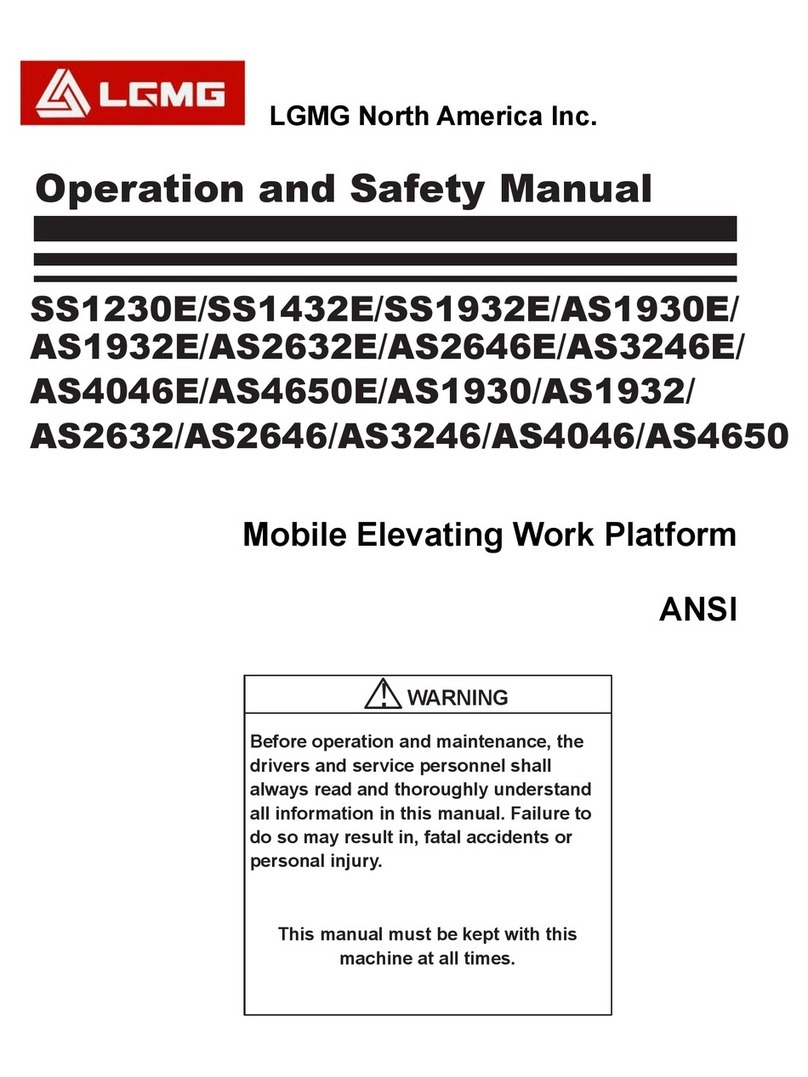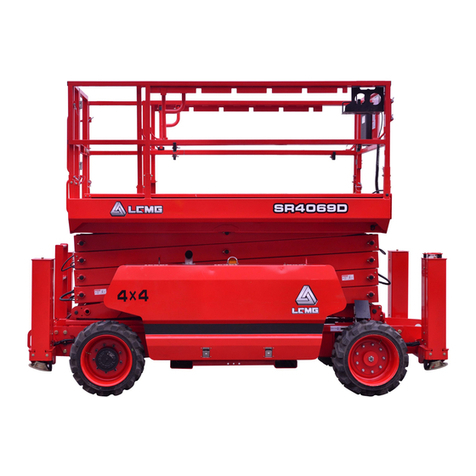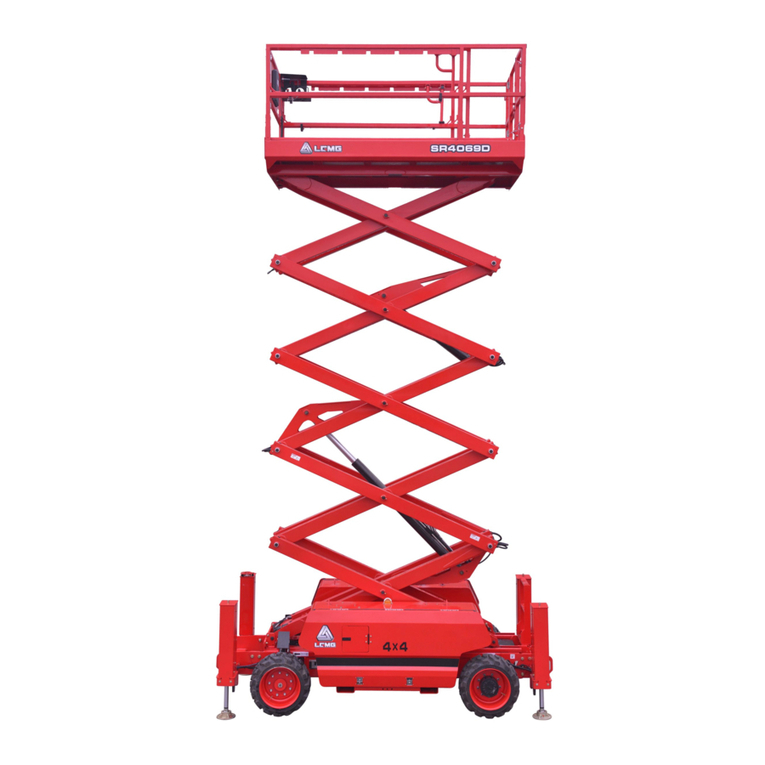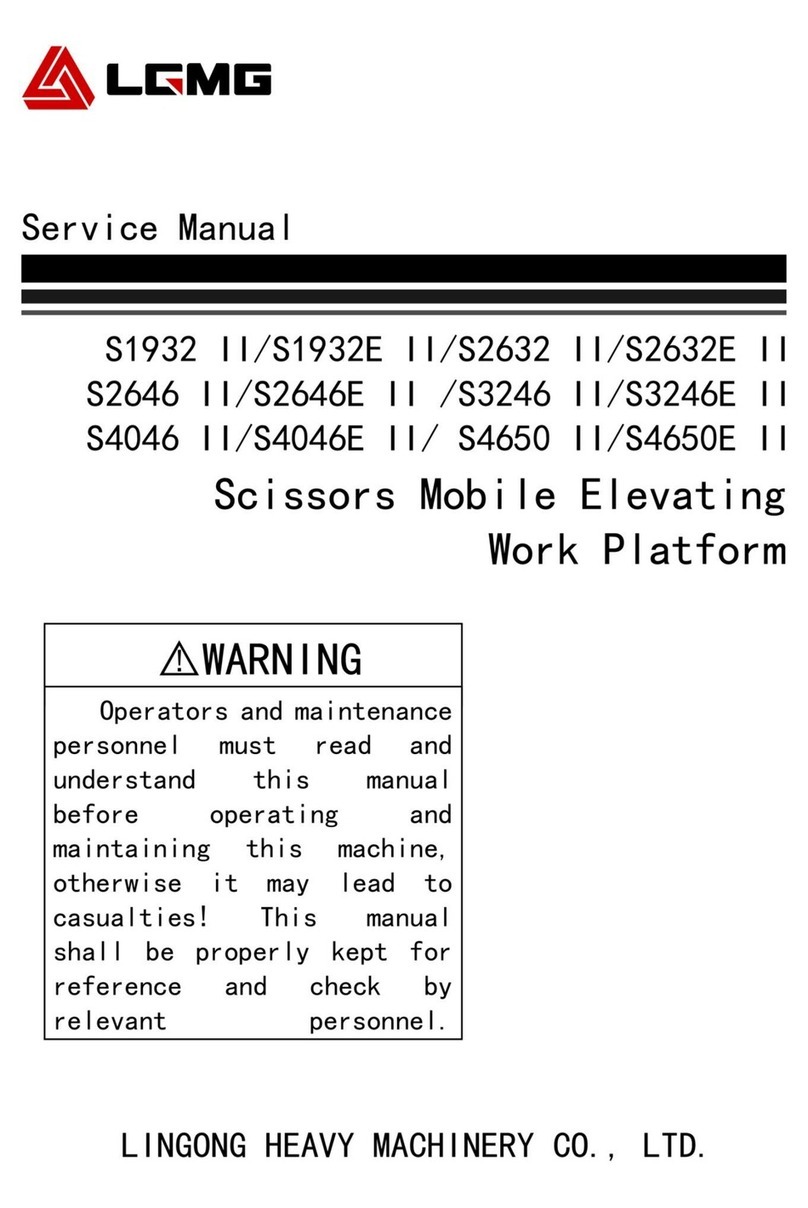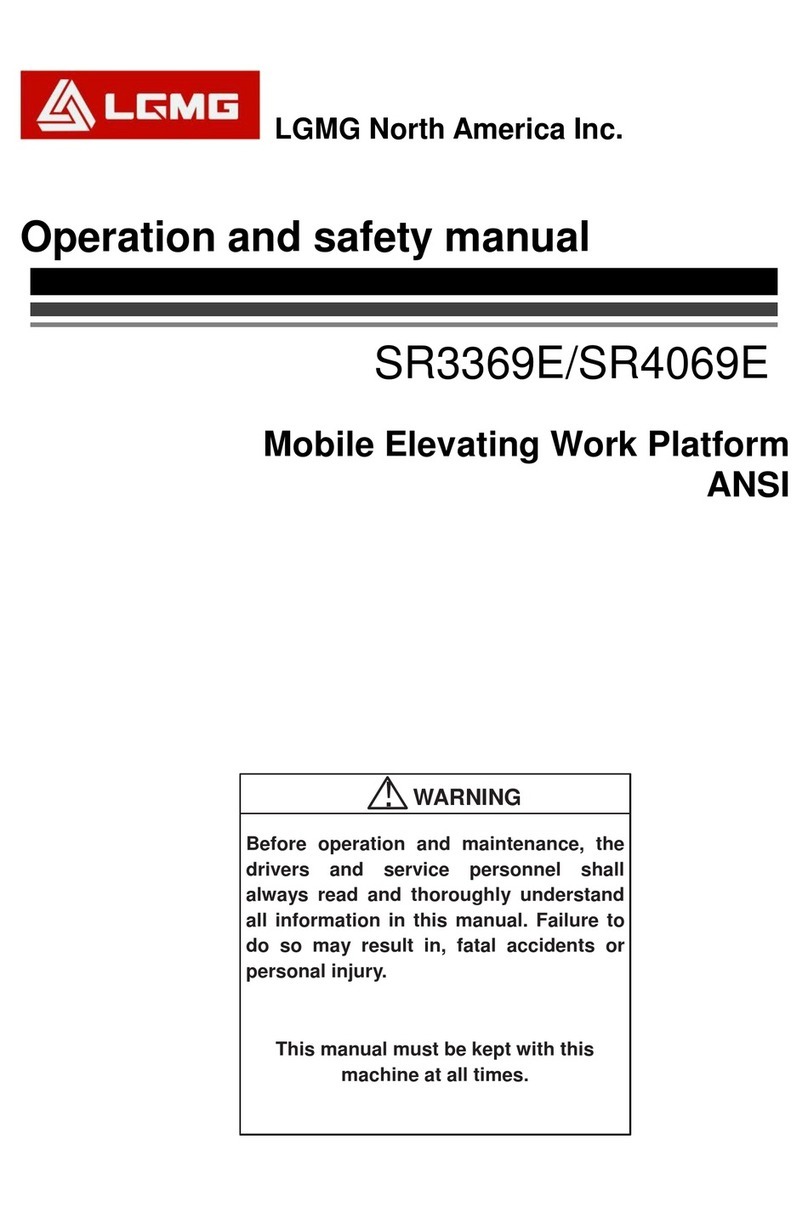
Maintenance Manual of Articulated Boom
Mobile Elevating Work Platform
3
1.1 Observing the
Regulations
1) You are properly trained and qualified to
operate and maintain the machine safely.
2) All safety regulations in this manual,
workplace safety regulations and
applicable government laws and
regulations must be read, understood and
complied.
3) Equipped with PPE, such as helmet, seat
belt, safety shoes, goggles, protective
clothing, insulating gloves, insulating shoes,
etc., and in good physical condition.
4) When maintenance and repair procedures
are being performed, many dangers
indicated in the Operation Manual will also
become potential safety hazards.
5) Scheduled maintenance and repair can
only be completed by trained and qualified
maintenance technician.
6) Dispose of waste materials in accordance
with government regulations and workplace
regulations.
7) Only parts and consumables approved by
the LGMG can be used.
8) Always perform functional tests after
maintenance.
1.2 Inspection Manual
It's necessary for safe equipment operation to
keep operation manual and maintenance
manual in good condition.An illegible or missing
manual will not provide the necessary safety
and operational information for the safe
operation.
1) Make sure that the operation manual and
maintenance manual are complete in the
file box.
2) Check each page of the inspection manual
to ensure that it is legible and in good
condition.
3) Put the manual into the file box after use.
△
! CAUTION: If the manual needs to
be replaced, please contact the LGMG
service personnel.
1.3 Check Labels and Decals
It is necessary for safe operation of equipment
to keep all safety and description labels and
decals in good condition. The label warns the
operator and staff of many possible hazards
during use of this equipment. It also provides
the user with operation and maintenance
information. The illegible label cannot warn the
staff of steps or dangers, which may also lead to
unsafe operation.
Refer to the label section of this operation
manual to check whether all label are where
they shall be.
Check the clarity and damage of all label and
immediately replace any damaged or illegible
label.
△
! CAUTION: If you need to replace
the label, please contact the LGMG
service personnel.
1.4 Every Day or Every 8
Hours
1.4.1 Check for Damaged and Loose or
Missing Part
Perform this step every 8 hours or every day.
Daily equipment status checks will be necessary
for safe equipment operation and good
equipment performance. Incorrect positioning
and repair damage, and loose or missing parts
may lead to unsafe operating conditions.
1) Check the damage of the whole equipment
and incorrect installation or loss of parts,
including:
Electrical components, wiring and cable












